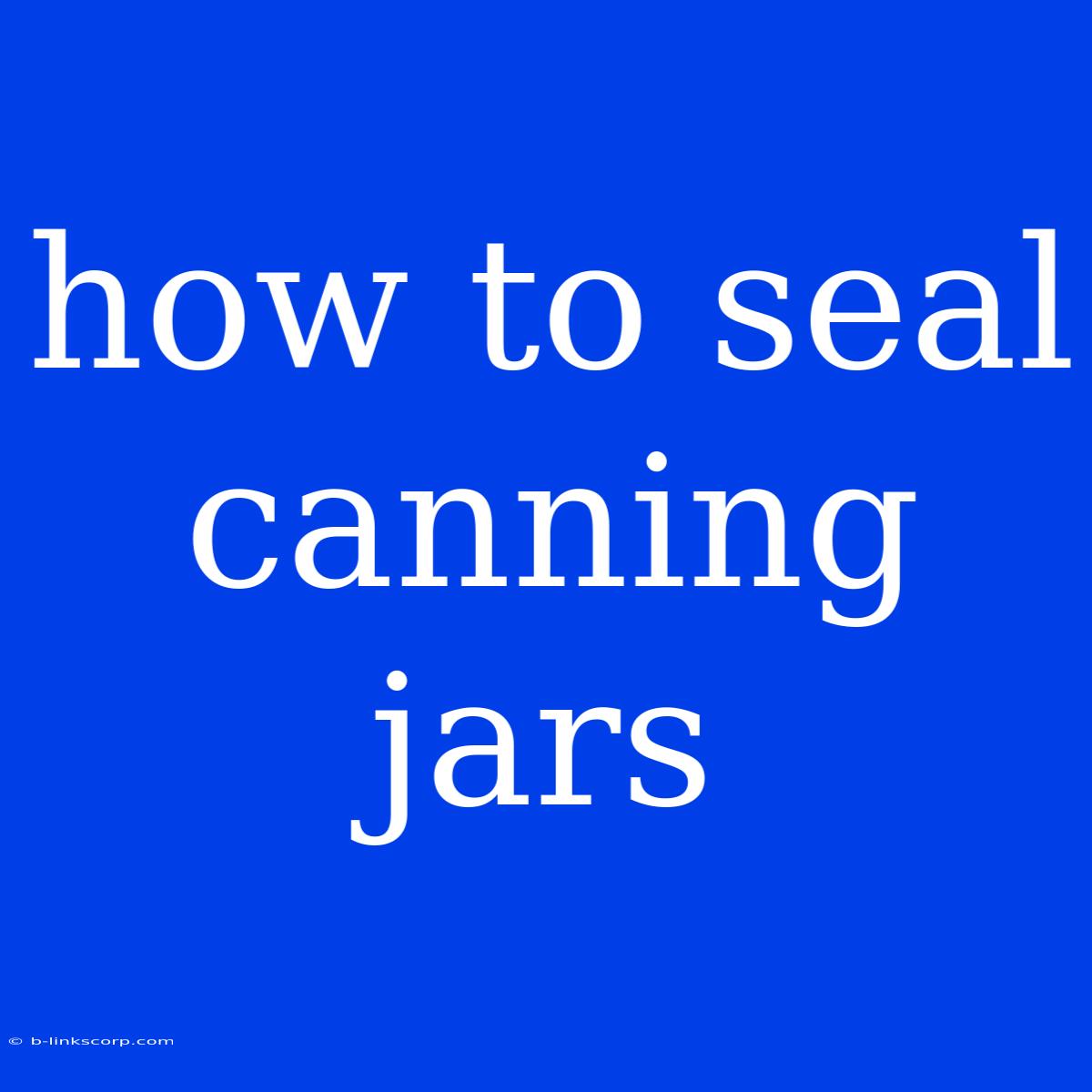How to Seal Canning Jars: A Step-by-Step Guide
Canning is a great way to preserve fresh produce and enjoy the flavors of summer all year long. But a crucial step in this process is ensuring a proper seal on your canning jars. This guide will walk you through the steps of sealing canning jars and provide tips for success.
Why Sealing Canning Jars is Important
A properly sealed canning jar creates a vacuum that prevents spoilage and preserves the quality of your food. This is achieved by expelling air and creating an airtight environment. If your jars aren't sealed correctly, bacteria can contaminate the food, leading to spoilage and potential health risks.
Types of Lids for Canning
There are two main types of lids used for canning:
- Reusable Metal Lids: These lids are made of metal with a rubber seal. While reusable, these lids are often only good for a few uses.
- Single-Use Lids: These lids are made of metal with a rubber seal and are designed for single use. They are often the preferred choice for home canning.
Steps to Seal Canning Jars:
- Prepare Your Jars: Make sure your jars are clean and free of any cracks or chips. Wash them in hot soapy water and rinse thoroughly.
- Fill and Process: Fill the jars with your desired food, leaving the appropriate headspace recommended for the specific recipe. Follow the processing times and methods for your chosen recipe.
- Wipe the Rims: Once your jars are filled, use a clean, damp cloth to wipe the rims thoroughly. Any debris or food particles on the rim can prevent a good seal.
- Place the Lids: Carefully place the lids on the jars, ensuring the rubber seal is centered and flat.
- Screw on the Bands: Screw on the bands finger-tight. Do not overtighten them, as this can damage the jar and prevent a proper seal.
- Process the Jars: Follow the specific processing time and method outlined in your recipe. This usually involves boiling water bath processing or pressure canning.
- Cool and Check for Seals: After processing, carefully remove the jars from the canner and let them cool completely. Check the seals by pressing on the center of the lid. A properly sealed jar will not flex.
Tips for Successful Sealing:
- Use Fresh Lids: Always use new lids for each canning session. Used lids may not seal properly.
- Follow Recipes Carefully: Use reliable canning recipes that provide accurate processing times and headspace recommendations.
- Check for Bubbles: During processing, watch for air bubbles rising from the jars. If you see bubbles, continue processing for the recommended time.
- Store in a Cool, Dark Place: After cooling, store your sealed jars in a cool, dark place. This will help prolong their shelf life.
Identifying a Bad Seal:
- Lid Bulges: If the lid of the jar bulges up, this indicates a failed seal and the contents may be unsafe to consume.
- "Click" Sound: When you press on the center of the lid, a properly sealed jar will not flex. If the lid flexes, it may not be sealed properly.
- Fluid Leakage: If you notice any fluid leaking from the jar, this is another indication of a failed seal.
Conclusion:
Sealing canning jars correctly is crucial for food safety and preservation. By following these steps and tips, you can ensure your canned goods are safe to eat and enjoy for months to come. Remember to always use reliable recipes, fresh lids, and pay attention to any signs of a failed seal.

